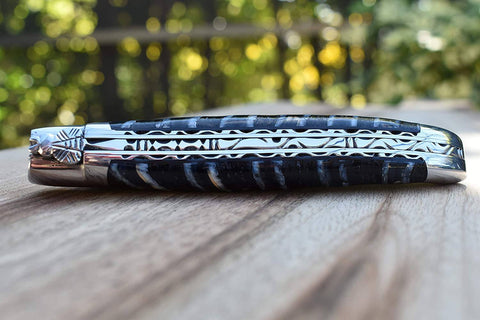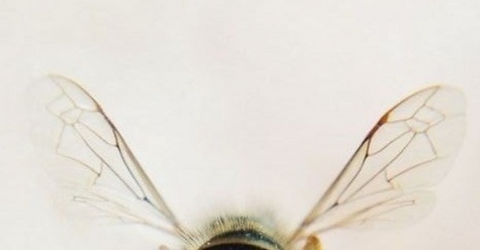In 1829, in a small mountain village in the Aveyron region of southwestern France, a modest peasant knife emerged. Its extreme sense of practicality, its pure line and its iconic bee, symbol of prestige and quality, will raise it to the rank of the most famous knife in France.

The origins :
Before the birth of the Laguiole as you know it, the local Aveyron knife was the 'Capujadou'. It was composed of a fixed and pointed blade fitted on a piece of wood.
However, it was only much later that the iconic Laguiole line was created by combining the local knife with a Catalan finding.
Indeed, in the 19th century, the elders traveled to Spain for the winter period to work as lumberjacks and sawyers. It was during this time that some of them brought back to their native lands the 'Navaja'.
The local knife of the time, the 'Capujadou' and the 'Navaja', thus gave birth to the Laguiole.

Uniqueness :
When talking about buying a Laguiole knife with anyone who owns one of those knives, it is possible that one comment will come up every time with a wide smile on their face: "I didn't hesitate for long, this knife appeared to me as an evidence".
A blade in soft steel "12C27 SANDWIK" with fine grinding and tireless cutting characteristic of our, 109 operations for a one-piece model, 166 for a two-piece, 216 for a three-piece here is the story that the hands of the knifemaker make experience the raw materials.
This is the long journey of handcrafting in the poetic and timeless lands of Aubrac that elevates each Laguiole to the rank of a unique and personal work of art for its owner.

Fun facts :
- When offered a Laguiole knife, it is customary to thank this gesture by giving, in return, a coin
- The Occitan pronunciation has been preserved, which is why it is written LAGUIOLE and pronounced "LAIOL".
- Symbol of the Laguiole knife, the legend tells that the emperor Napoleon 1st would have authorized the inhabitants of the city of Laguiole to wear the coat of arms of the bee as a sign of recognition of their bravery.
- When closing the knife, amateurs should carefully avoid snapping the blade to preserve it, thus respecting the Aveyron proverb: "ressort silencieux vivra vieux" ("silent spring will live long").
- Cutlery in Espalion (cradle of the Laguiole En Aubrac brand) is an ancient activity older than the USA, since two cutlers were already working in the 17th century.
- The shepherds' cross on the handle represents the Holy Cross. When the peasants were away for several months for the 'Transhumance', the Laguiole was planted in the bread, to serve as a makeshift religious office.


